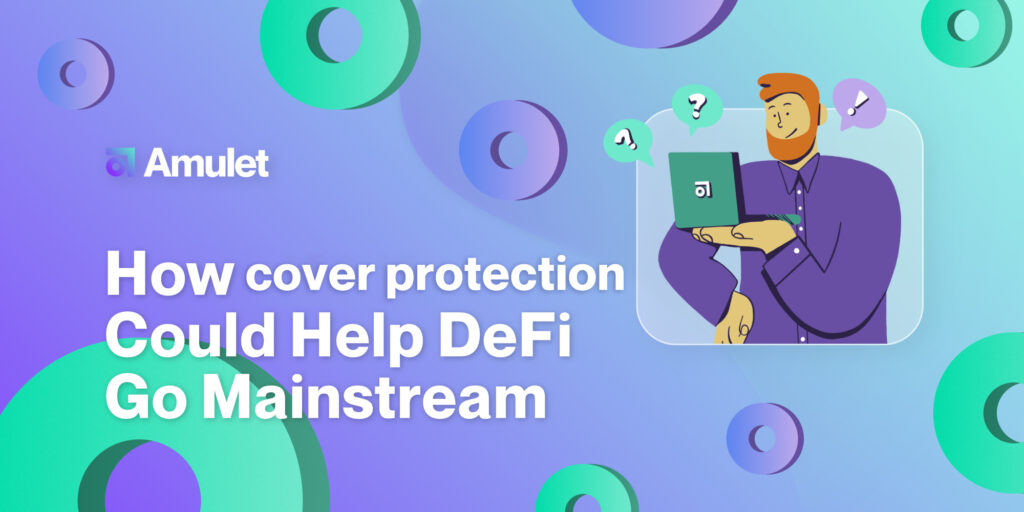Decentralized Finance, or DeFi, is a very exciting and promising sector that has seen rapid growth in recent years. By early 2022, the amount of money in the DeFi space had exceeded $200 Billion, which would place it somewhere between the GDP of Ukraine and Greece. DeFi promises to democratize finance—to make banking accessible to everyone around the world. It allows people, rich and poor, to access the financial tools they need to live their lives, like sending and receiving money rapidly, or borrowing money, all with lower fees. It allows people to put their excess wealth to work, without relying upon centralized banks and centralized currencies, especially in places where they are unavailable or untrustworthy. There’s great optimism surrounding this space, and its vision for the future is certainly a compelling one.
That vision for DeFi will require widespread, mainstream adoption: businesses, financial institutions, and retail investors around the world using these technologies in their day-to-day activities. It’s also clear, however, that this mainstream adoption remains elusive: DeFi is still largely a niche space that plays no role in most people’s lives.

The Obstacles to DeFi:
There are several important reasons for this. One is that the technology is often difficult to understand or to use for less tech-savvy, often older users. This is changing slowly, and new tools are constantly being released to make the space more accessible for all potential users. As DeFi becomes easier to navigate, these people will begin looking into the space and seeing whether it makes sense for them.
For DeFi to really break into the mainstream though, the biggest obstacle will be its risk and uncertainty. This risk can take the form of the dramatic price swings that have made DeFi and cryptocurrency notorious among the general population. Indeed it’s probably safe to say that within much of the population, DeFi is seen only as a source of highly speculative assets rather than a serious instrument of finance. DeFi has sought to mitigate this source of uncertainty through methods like the advent and widespread adoption of stablecoins, bringing the predictability of fiat currency to the decentralized space.
However, another major source of risk in DeFi is the possibility of exploitation or failure. In late May 2022, UST tether, an algorithmic stablecoin designed to reflect the value of the US Dollar, made headlines when it suddenly depegged from the fiat it was supposed to match. That is to say, it was unable to keep its value at $1 US, and became worth a fraction of that value. The event sent shockwaves through the DeFi space, and it also earned substantial coverage in major mainstream financial news outlets like the New York Times, Wall Street Journal, and CNBC. Many casual observers likely took away one idea from that fiasco: their money is not safe in DeFi.
In addition to those incidents, there are also cybersecurity concerns: wallet hacking, smart contract exploitation, and similar threats. Taken together, these concerns mean that risk-averse retail investors, businesses, and financial institutions do not have the predictability they need to venture confidently into this space. Those risks also make people think twice about using DeFi as a means to transfer money or receiving loans, at least when large sums are involved.
The Role of Coverage Like Amulet’s
DeFi coverage has an important role to play in helping solve these problems. Most obviously, its central purpose is about mitigating risks, and people can purchase coverage that pays out in certain events. For example, at its launch, Amulet will offer protection against stablecoin depegs like that of Tether, as well as for smart contract exploits. This type of coverage will allow individuals or institutions to be confident that their funds are secure from adverse events. That predictability would be a huge step toward bringing mainstream users and investors into the DeFi space.
Other benefits from protection like Amulet’s will accrue to the space as a whole, even for those who do not choose to purchase coverage. As Amulet and other providers create reliable coverage on products across the DeFi space, users will begin to demand protection on all assets before they invest. And when Amulet and other protocols carefully set rates based on a risk assessment, users will get an idea of the security risks of an asset based on its cost of that coverage. Some products may even be deemed uncoverable because their risks are too high, forcing users to think twice before investing. The ultimate result of coverage will be much greater transparency about security risks, incentivizing creators to make better and more secure products.
Ultimately, we can think of the DeFi space as similar to the early experience of online shopping: buying things online was once a hassle and a security nightmare involving frequent credit card theft, hacking, and scams. But as banks, merchants, and credit card companies worked together to create stronger security systems, online shopping became trustworthy, and so it entered the mainstream. Today, Ecommerce is expected to hit $5.5 Trillion in 2022, and Amazon is one of the largest companies in the world.
If DeFi is to become similarly mainstream, it will need to become a similarly comfortable space where users can trust that their money is safe. In the short-term, protection like Amulet’s will help provide peace of mind to those who purchase its services. In the long-run, a thriving market in protection for the sector as a whole will have the effect of helping to create a more secure DeFi space for everybody involved.

